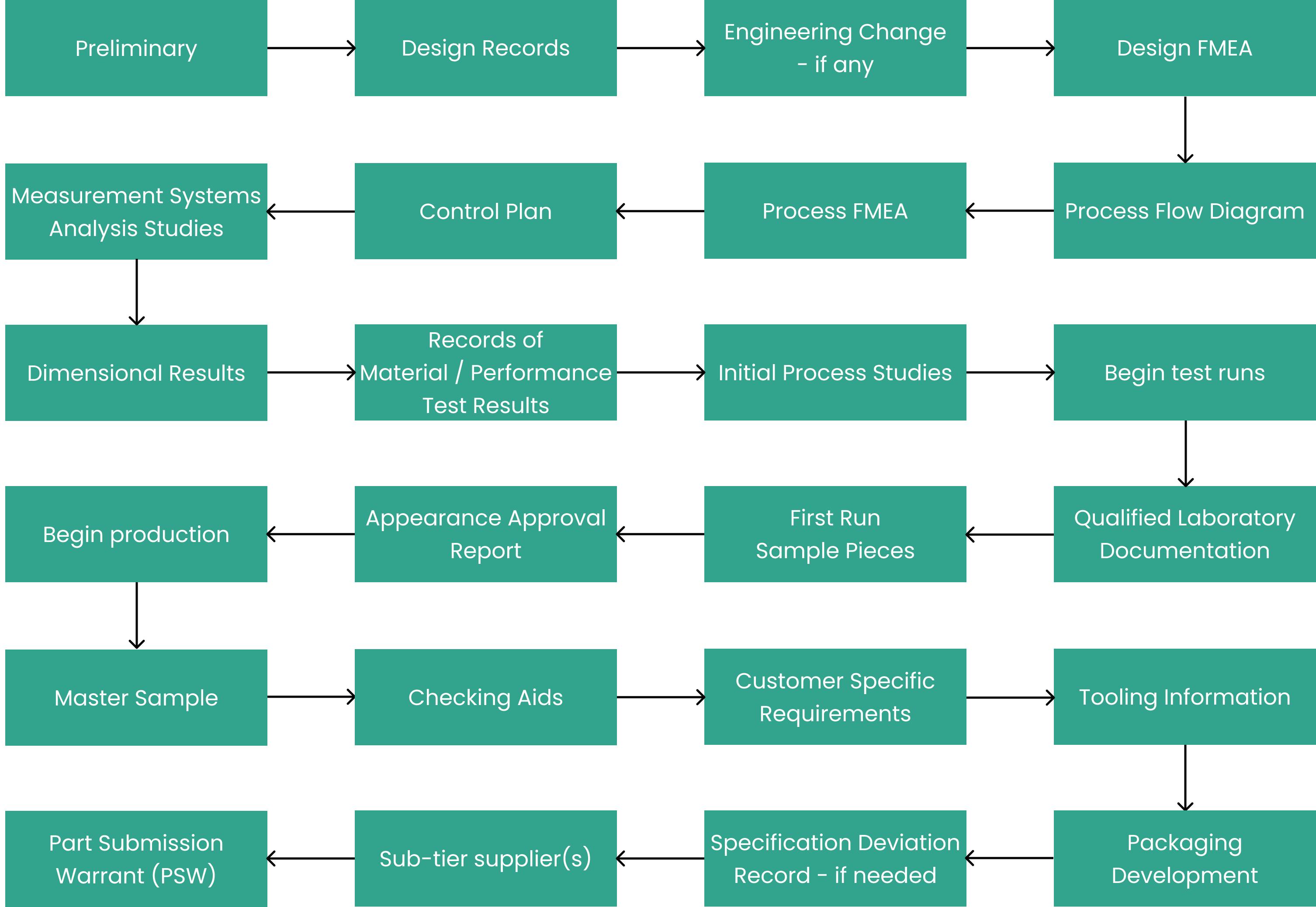Production Part Approval Process (PPAP)
Production part approval process (PPAP) is an integral part of New Product Development (NPD) and Advanced Product Quality Planning (APQP) beginning at the start of a project for qualification of each component and its assemblies. From the award and acceptance by supplier of component(s), assembly(s), etc. the PPAP process will guide you through the various requirements for qualification to ensure that all aspects of the APQP process are completed. Items such as process flow, PFMEA, control plan, material certifications, dimensional tolerance studies, etc. allow the organization to save time and money from issues late in the project and ultimately meet the needs of the target customer.
STAGES

The workflow is meant to be kicked off once an RFQ is complete and the winning supplier has been informed of the choice.
The following stages are identified in the blueprint:
Preliminary Tasks here are not directly related to PPAP and actually precede its start to set things up properly. Advanced Product Quality Planning requirements are set and the supplier is expected to confirm accepting the contract award. Then a project team is formed by the supplier with one representative from the client side. The project team works to put in place a project plan based on VOC and past projects’ lessons learned.
Stages 2-19 act as a PPAP checklist to complete and collect required documentation.
Stages 20-23 are optional tasks that depend on customer requirements and vary from tooling to packaging to sub-tier suppliers.
Stages 24-28 are conditional stages related to Part Submission Warrants (PSW) which may be skipped or started based on PPAP level chosen.
WHO SHOULD USE THIS PROCESS
Heavily used in automotive and aerospace organizations the PPAP process is best suited for medium to large companies typically medium to large-scale production. The PPAP process is also used in agricultural, electronics, packaging and appliance manufacturing. Many smaller Tier 1 companies are prime targets for use when required to supply part qualification data to larger companies. Requirements can be tailored to company size, production quantities, industry requirements and business models. This workflow can be modified to work for internal manufacturing as well as for incoming components from outside suppliers.
WHY USE THIS PROCESS
The PPAP process is important to ensure parts meet customer requirements, specifications and can be produced at manufacturing production rates. This workflow will reduce project lead times and ensure speed of production ramp up by eliminating component issues early on in tooling and manufacturing ramp up. While ensuring component and product quality. Other areas of importance are assistance in problem solving issues later in the product life cycle. This workflow is typically managed by the Quality team or sourcing team depending on organization.
Good PPAP practices allow to minimize or even eliminate quality defects and create confidence in the process. This leads to reduced time to manufacture and increased cost savings which ultimately leads to smooth serial production.